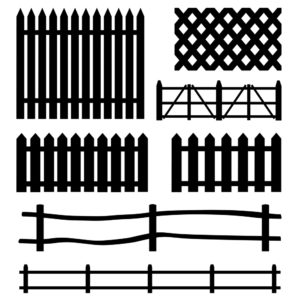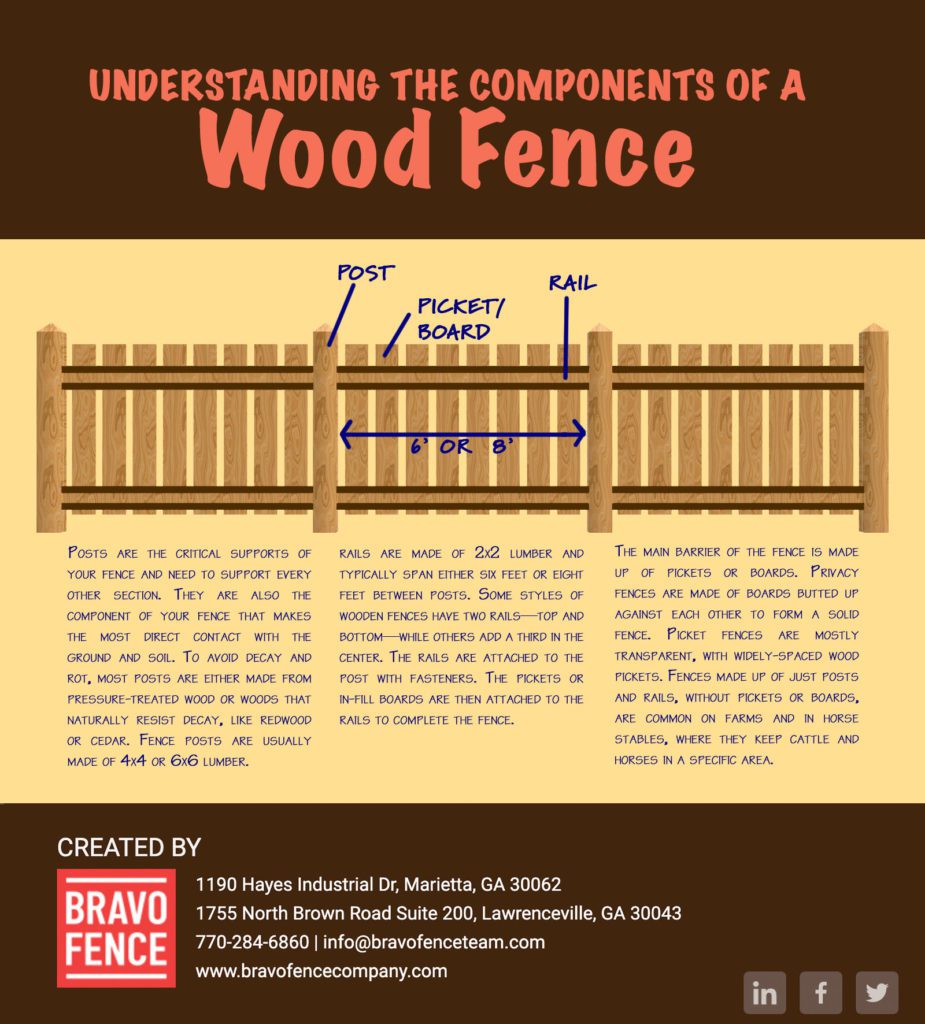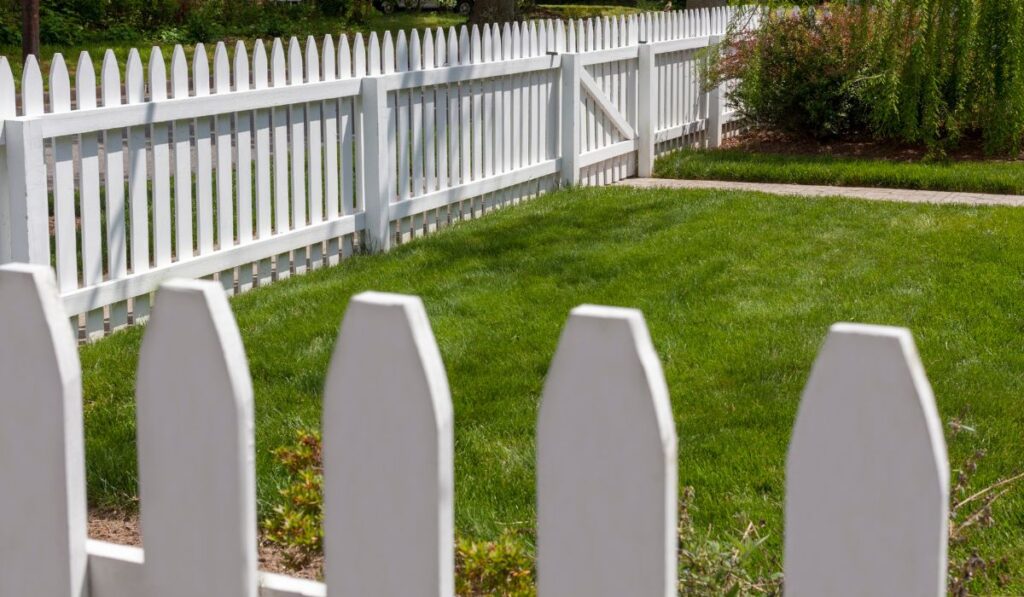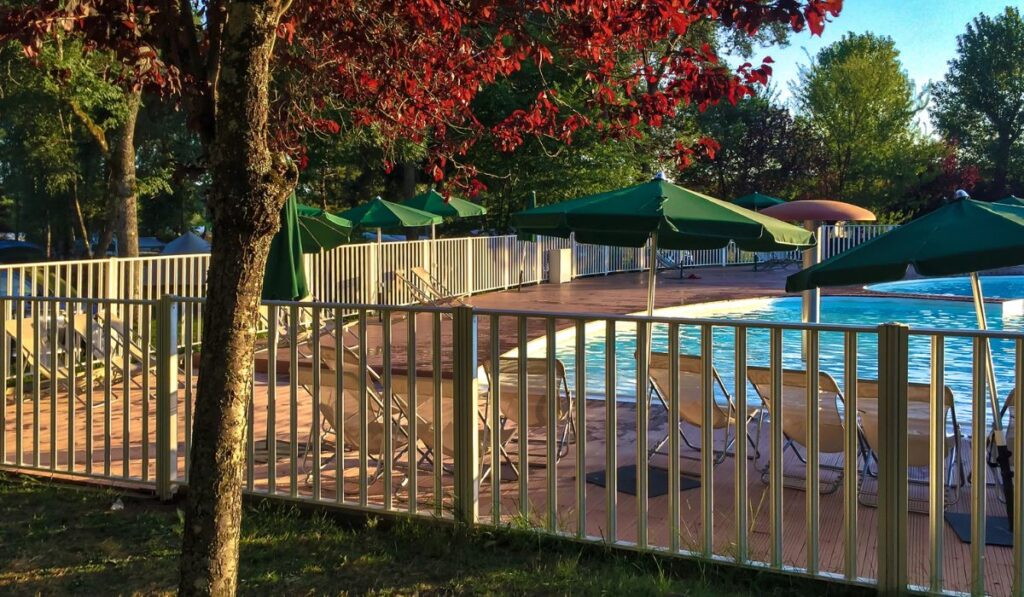Wood fences come in a wide variety of styles. When you combine the range of available materials with the various designs and finishes, the options are nearly limitless. But no matter what exact style of fence you end up installing, all wood fences have the same basic elements. Understanding the components of a wood fence is a good place to start when selecting your own wood fence. It’s much easier to make sense of all the options when you speak the lingo. So here’s our handy introduction to what exactly makes up a wood fence. There are hundreds of material, design, and style combinations. After this introduction, you’ll be able to talk about all of them with the confidence of a pro.

Fence Posts
The posts are the most critical components of a wood fence. Every other part of a wood fence is anchored to the posts. Fence posts are usually made of 4×4 or 6×6 lumber. It is worth noting here that 4×4 lumber is not really four inches square. Despite its name, 4×4 lumber is usually about 3.5” square. The same is true for the sizing of other parts of your fence. So before making any design plans, be sure to find out the exact size of your fencing components.
The fence posts’ height depends on the finished fence’s height. In some cases, the posts will be flush with the top of the fence. In other designs, you may want the posts to extend beyond the top of the in-fill panels. When posts rise above the rest of the fence, they are often topped with decorative finials or other post decorations. Whatever height you choose for your posts, remember that the length of the piece of lumber includes the part buried under the ground. So the posts you buy should be as long as their finished height plus the buried section.
Posts are the critical supports of your fence and need to support every other section. They are also the component of your fence that makes the most direct contact with the ground and soil. To avoid decay and rot, most posts are either made from pressure-treated wood or woods that naturally resist decay, like redwood or cedar.
Avoiding Decay in Wood Fence Posts
Even with the best precautions, posts are often the first parts of a fence that need mending. Once a year, inspect your wood fence, paying particular attention to the base of the posts. If you find you need to replace more than just a few posts, it may be time to throw in the towel. Numerous rotting posts are a sign that more damage is on its way, potentially in the in-fill material. If you are considering replacing several posts, consider buying a new fence. Contact Bravo Fence Company today to get your free quote.
Posts are the first to rot, but they are also the first components of a wood fence to be installed. The posts are usually anchored in concrete for extra strength and to avoid possible rot caused by contact with wet soil. In climates that experience cycles of freeze and thaw, posts should go extra deep to resist the heaving effect of freezing and thawing ground. Ideally, a well-installed wood fence post can last a decade or longer.
Rails
The rails are the long horizontal pieces of lumber that run between the posts. In most wood fences, the rails are made of 2×2 lumber and typically span six or eight feet between posts. Some styles of wooden fences have two rails—top and bottom—while others add a third in the center. The rails are attached to the post with fasteners. The pickets or in-fill boards are then attached to the rails to complete the fence.
You should use a minimum of two horizontal rails between posts for all fences less than 5 feet high, three rails for fences 5 to 7 feet high, and four rails for 8-foot high fences.
Pickets or In-Fill Boards
The main barrier of the fence is made up of pickets or boards. Which type you have depends largely on the purpose of the fence.
Privacy fences are made of boards butted up against each other to form a solid fence. The fence can keep others from seeing in and will hide unwanted views of the outside. It can also block wind and provide shade for some plants. A privacy fence is perfect for creating a secluded backyard, and that is one of its most common uses.
Picket fences are mostly transparent, with widely-spaced wood pickets. Picket fences are ideal for delineating property and for decorative purposes. For many, a white picket fence is a part of the American dream. Picket fences work well with cottage-style houses or landscapes in the style of English gardens.
More rural-styled houses and landscapes often use a type of fence with no pickets or boards at all. Fences made up of just posts and rails are common on farms and horse stables, where cattle and horses are kept in a specific area. One popular variation is the split-rail fence. Split rails are roughly hewn and typically slip into the posts with mortise-and-tenon joints. Common woods include yellow pine and cedar. There are also options for split rail fencing made of vinyl, which has the same look as real wood but will last much longer.
Some fence-builders install individual boards and pickets directly onto the rails. However, it is very common for in-fill to come in manufactured sections, either six feet or eight feet long. The sections are fastened onto the rails as a single piece. In some cases, sections include the rails. In that case, the rails can be fastened to the posts, and the entire section is complete.
In-Fill Board Materials
In-fill boards are the most visible components of a wood fence. Thus, homeowners often choose a board material for its visual appeal, durability, and other properties. Common infill-board materials include pine, cedar, cypress, and redwood. Check out this recent post for a detailed discussion of wood fence materials.
Pine is popular because it can be cheap and is easy to work with. Lower-grade pine can cost as little as $1 for a six-foot section. Cedar and cypress are slightly more expensive, at $2-$4 a section. They are popular because they are naturally resistant to insects and rot. Many homeowners also find the look of cedar or cypress appealing. Redwood is the most expensive of the common in-fill board materials. It can cost $8 a section. Redwood is naturally rot and insect-resistant, weathers well, and has a uniquely beautiful appearance.
Professional Fence Installation
Now that you know the components of a wood fence, you can select the design and materials for your fence. Your professional fence installer can help with choosing the right materials for each section to match your design and budget. If you’re ready for a new fence or just want to learn more about your fencing options, contact Bravo Fence Company. Our friendly office staff is happy to help, and our builders will work with you to create the perfect fence.







